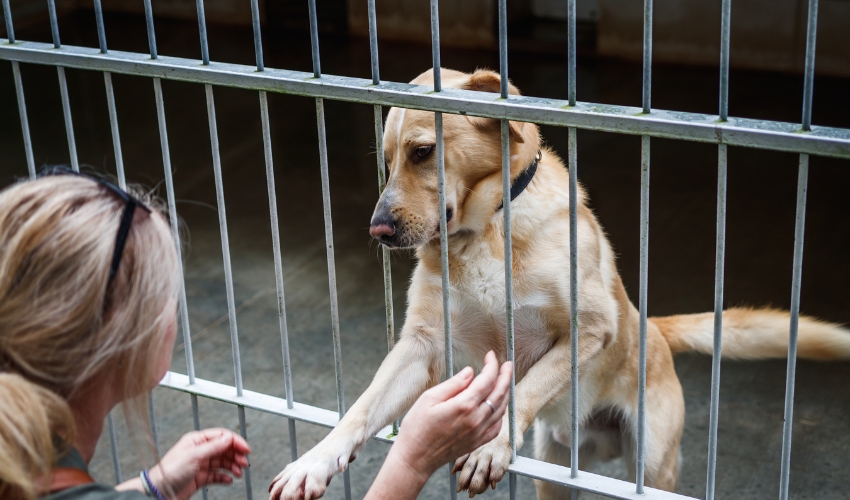Diabetes is a systemic disease that affects dogs and other animals. While it is not possible to completely cure diabetes, pet owners can somehow manage it by being aware of the first signs of a dog with diabetes.
Diabetes mellitus, also known as “sugar diabetes,” is the most common kind of diabetes in dogs. It’s actually a metabolic problem. Understanding some of this process will help you comprehend what diabetes is, as well as its first signs.
The Basics Of Diabetes In Dogs
The glucose-insulin link isn’t operating properly in diabetics. There are two commonly known diabetes in dogs:
- Insulin deficient diabetes occurs when the body of the dog does not produce enough insulin. When the pancreas is injured or not working properly, this occurs. This type of diabetes necessitates daily injections to replace the insulin that has been lost.
- Insulin-resistance diabetes occurs when the pancreas produces insulin but the body of the dog does not utilize it properly. Glucose isn’t being taken from the blood and into the cells because the cells aren’t responding to the “message” of insulin.
This type of diabetes is more prevalent for those who are older and overweight. While being in heat or pregnant, female dogs might develop transient insulin sensitivity.
The Early Signs Of Diabetes In Dogs
Learning what are the first signs of a dog with diabetes may only be half of the battle but it is a good place to start!
- Extreme thirst – The dog may consume more water and fill the water bowl more regularly.
- Urination increases – The dog may demand numerous trips outside and begin to have “accidents” within the house. Frequent urination (and thirst) occurs as the body attempts to eliminate excess sugar by excreting it in the urine together with water that binds to the sugar.
- Loss of weight – Despite eating normal meals, the dog can lose weight. This is due to the dog’s ineffective conversion of nutrients from its meal.
- Appetite rises – Even if the dog eats a typical amount of food, the dog may feel constantly hungry because the body’s cells aren’t getting enough glucose.
Diagnosis For Diabetes In Dogs
After knowing what are the first signs of diabetes in a dog, the next thing to do is consult the professionals for early dog diabetes treatment. Veterinarians perform simple tests such as checking for increased glucose (sugar) in the blood and urine. Blood tests detect other diabetes symptoms such as increased liver enzymes and electrolyte imbalances.
The earlier diabetes is detected and treated, the greater the chances are for the pet to have a normal life.
Common Reasons of Diabetes in Dogs

- Age – Diabetes can affect dogs of any age, but it is more common in middle-aged and elderly canines. When diagnosed, most dogs are 5 years old or older.
- Sex – Female dogs who have not been spayed are twice as prone to develop diabetes as male canines.
- Pancreatitis that is chronic or recurrent – Chronic or recurrent pancreatitis (pancreatic inflammation) can cause substantial damage to the organ, leading to diabetes.
- Obesity – Obesity increases insulin resistance and increases the risk of pancreatitis, which can cause diabetes.
- Medications containing steroids – When used in excess, these can lead to diabetes.
- Cushing’s syndrome – Cushing’s disease is caused by the body’s overproduction of steroids, which can lead to diabetes.
- Other medical issues – Autoimmune illnesses and viral infections cause diabetes.
- Genetics – Diabetes can affect any breed or mixed breed, and heredity appears to play a role in increased or decreased risk. According to a 2003 study, mixed-breed dogs are no more likely than purebred dogs to get diabetes. Breed vulnerability varies among purebreds, with some having a very low risk and others having a larger risk.
The Common Treatments Of Diabetes In Dogs
Once the veterinarian completes the consultation, and you know what are the first signs of diabetes in a dog, the following lists the commonly advised treatment:
- Diet – Veterinarians will recommend a proper dog diabetes diet for your pet. This will usually contain some high-quality protein, as well as fiber and complex carbohydrates to assist decrease glucose uptake. A low-fat diet may also be recommended by your veterinarian.
- Exercise – It is particularly crucial for diabetic dogs to establish a mild but constant exercise regimen to avoid unexpected spikes or decreases in glucose levels.
- Injections – The majority of diabetic dogs will necessitate daily insulin injections under the skin, which the owner will have to learn to administer. Although it’s fair to be concerned about doing so, it’s not as difficult as it may appear. It can easily become a short and painless daily ritual for both the dog and the owner.
Conclusion
Diabetes is quite bothersome for humans, so imagine how it would be if your dog contracted this disease. If you notice all the answers to the first signs that occur to a dog with diabetes, make sure that you’ll take all the necessary measures needed to aid your fur baby in the best ways possible.
If you want to spare other furbabies from the pain of diabetes, become a volunteer and adopt! Visit Doobert to know how to be a part of this endeavor.











